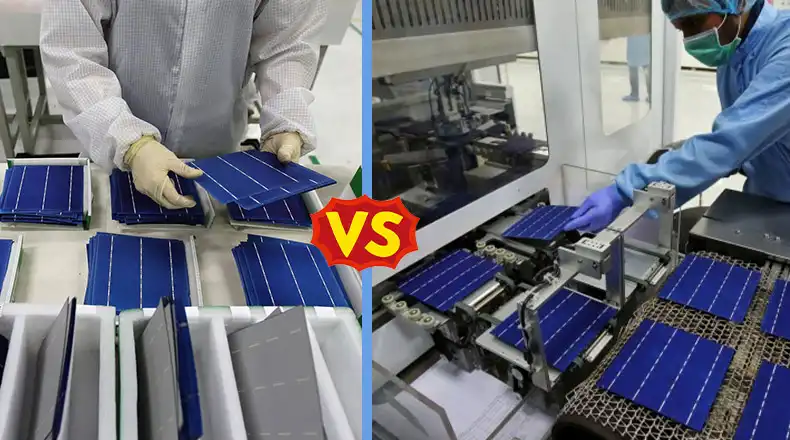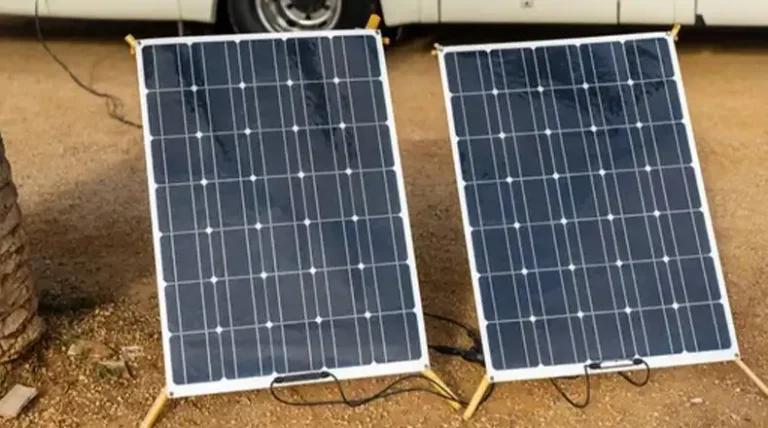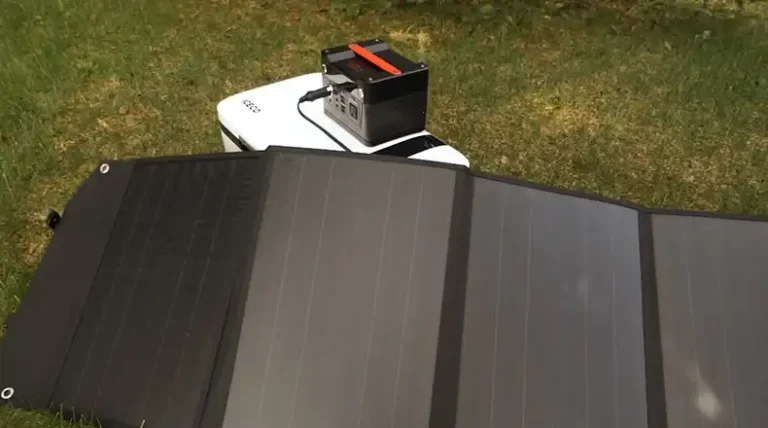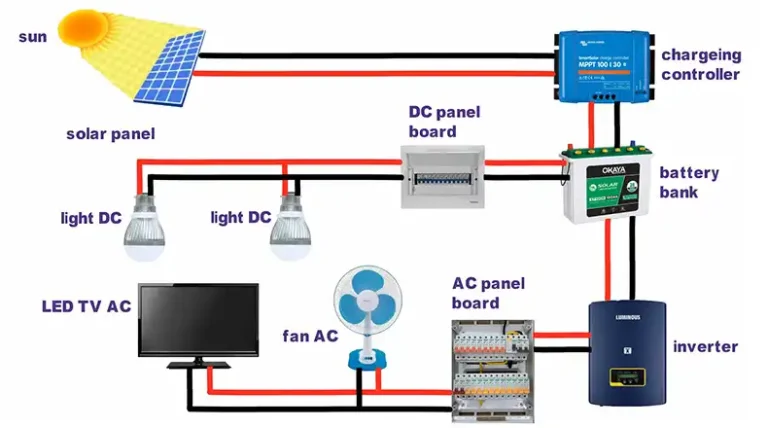NMOT vs STC in Solar | Unveiling the Solar Secrets
Choosing the right solar panel for your home or business can be a daunting task. With so many different brands, models, and specifications to choose from, it can be difficult to know where to start. Two of the most important factors to consider are NMOT and STC ratings.
At first glance, they may appear as enigmatic as alphabet soup, but fear not; we’re here to shed some light on these terms. In this article, we’ll explore the meanings of NMOT and STC and dive into the key distinctions between the two.
So, whether you’re a seasoned solar enthusiast or just looking to understand these crucial solar metrics, grab your metaphorical solar-powered magnifying glass, and let’s unravel the mysteries of NMOT vs. STC!

What Do NMOT and STC Mean?
Before we get into the nitty-gritty of the differences between NMOT and STC, let’s demystify what these abbreviations stand for.
NMOT – Nominal Module Operating Temperature
NMOT stands for Nominal Module Operating Temperature. It’s a standard term used in the solar industry to represent the expected operating temperature of a solar panel under specific conditions. These conditions are typically:
- 800 W/m² irradiance
- 20°C ambient temperature
- 1 m/s wind speed
The NMOT is important because the efficiency of a solar panel decreases with increasing temperature. By knowing the NMOT, you can get a better estimate of the panel’s real-world performance.
STC – Standard Test Conditions
STC stands for Standard Test Conditions. It’s a standardized set of conditions used to measure and compare the performance of solar panels. These conditions are:
- 1000 W/m² irradiance
- 25°C cell temperature
- 1.5 atmospheres of pressure
STC is primarily used for comparing the performance of different solar panels from various manufacturers. It provides a standardized benchmark, allowing for a fair comparison of their power output under identical conditions. STC defines the conditions where a solar module is expected to perform at its peak.
What Are the Differences Between NMOT and STC?
Now that we’ve uncovered the meanings of NMOT and STC, it’s time to discern the key differences between these two vital metrics. Let’s dig into the details:
1. Temperature Variation
NMOT: NMOT gives us an estimate of the operating temperature of a solar module under “ideal” conditions, which means the temperature is somewhat influenced by the specific environmental conditions.
STC: STC, on the other hand, is a standardized measurement taken at a constant 25 degrees Celsius. It doesn’t account for real-world temperature variations that solar panels may experience.
2. Solar Irradiance
NMOT: NMOT doesn’t specify a fixed irradiance level, which means it can’t be directly compared between different solar panels or systems. It’s more like a reference point for manufacturers.
STC: STC specifies a consistent irradiance of 1000 watts per square meter. This makes it a uniform measurement for all solar panels, allowing easy comparisons.
3. Wind Speed
NMOT: NMOT considers a low wind speed of 1 meter per second, which may not reflect real-world conditions where wind speeds can vary.
STC: STC also includes a standardized wind speed, ensuring a level playing field for evaluating solar panel performance.
4. Practical Use
NMOT: NMOT is more commonly used by solar panel manufacturers as a reference point to design and rate their products. It provides insights into how a panel may perform under optimal conditions.
STC: STC is the go-to metric for consumers, installers, and those looking to compare different solar panels. It’s a consistent benchmark for evaluating performance.
Summary
| Characteristic | NMOT (Nominal Module Operating Temperature) | STC (Standard Test Conditions) |
|---|
| Purpose | Represents realistic operating conditions | Represents ideal laboratory conditions |
| Irradiance | 800 W/m² | 1000 W/m² |
| Temperature | Ambient temperature of 20°C | Cell temperature of 25°C |
| Wind Speed | 1 m/s | Not specified |
| Air Mass | Not specified | 1.5 |
| Typical Efficiency Ratings | Lower | Higher |
| Accuracy for Real-World Performance | More accurate | Less accurate |
Usage and When to Choose
NMOT (Nominal Module Operating Temperature)
Usage:
- For estimating real-world energy production
- When designing systems for specific environmental conditions
- For comparing panels in terms of actual expected performance
When to choose:
- When you need a more realistic assessment of panel performance
- For projects in areas with high ambient temperatures or variable weather conditions
- When optimizing system design for specific locations
STC (Standard Test Conditions)
Usage:
- For standardized comparison of different solar panels
- When marketing solar panels (as it typically shows higher efficiency)
- As a baseline for panel specifications
When to choose:
- When you need a quick, standardized comparison between different panel models
- For initial screening of panel options
- When working with industry standard specifications and certifications
Considerations for Both
- It’s often beneficial to consider both NMOT and STC ratings when evaluating solar panels.
- Use STC for initial comparisons and to understand the maximum potential of a panel.
- Use NMOT to get a more realistic expectation of performance and for fine-tuning system designs.
- Some regions or projects may have specific requirements for using one or both of these ratings.
- Always consider local environmental conditions and project-specific requirements when deciding which rating to prioritize.
Implications for Solar Panel Buyers
When choosing solar panels, it is important to consider both the NMOT and STC ratings. The STC rating will give you an idea of the maximum power output of the panel under ideal conditions. The NMOT rating will give you a more realistic idea of how the panel will perform in real-world conditions.
In general, it is best to choose solar panels with a high NMOT rating. This will ensure that the panel is able to meet your energy needs, even on hot days.
Example:
Let’s say you are designing a solar panel system to power your home. You have estimated that you need a system that can produce 10,000 watts of power under NOCT conditions.
If you choose solar panels with an STC rating of 300 watts, you will need to install 34 panels (10,000 watts / 300 watts per panel). However, if you choose solar panels with an NMOT rating of 270 watts, you will need to install 37 panels (10,000 watts / 270 watts per panel).
This difference in the number of panels required is due to the fact that the NMOT rating is a more realistic measure of solar panel performance in real-world conditions.
Final Thoughts
In the world of solar energy, understanding NMOT and STC is crucial. While NMOT gives manufacturers insights into module behavior under ideal conditions, STC offers consumers a standard reference point for comparing different panels. By grasping the differences between these two metrics, you can make more informed decisions when it comes to harnessing the power of the sun for your energy needs. So, as you embark on your solar journey, remember that while NMOT and STC may have their unique roles, both are instrumental in ensuring you get the most out of your solar investment.






